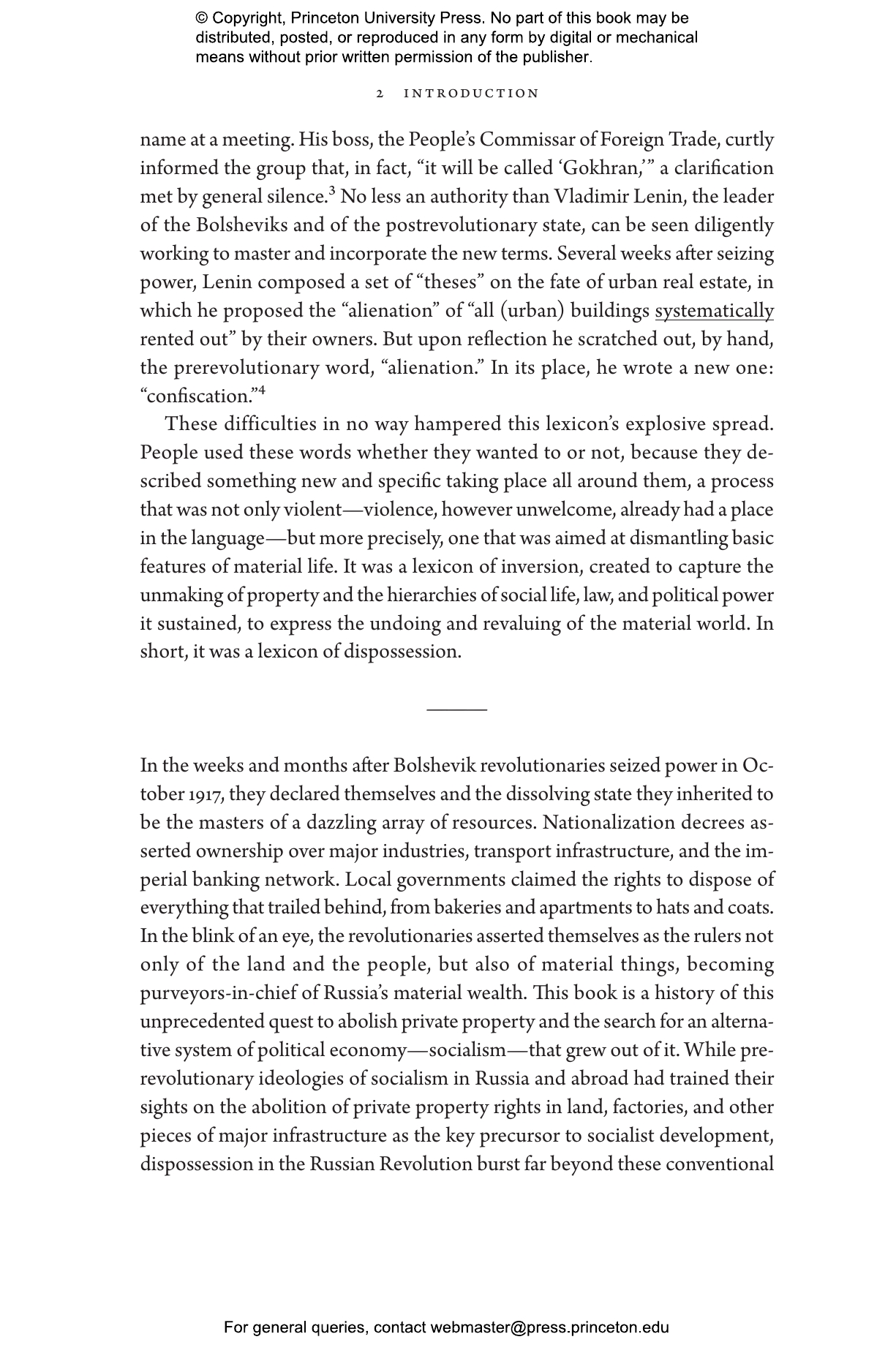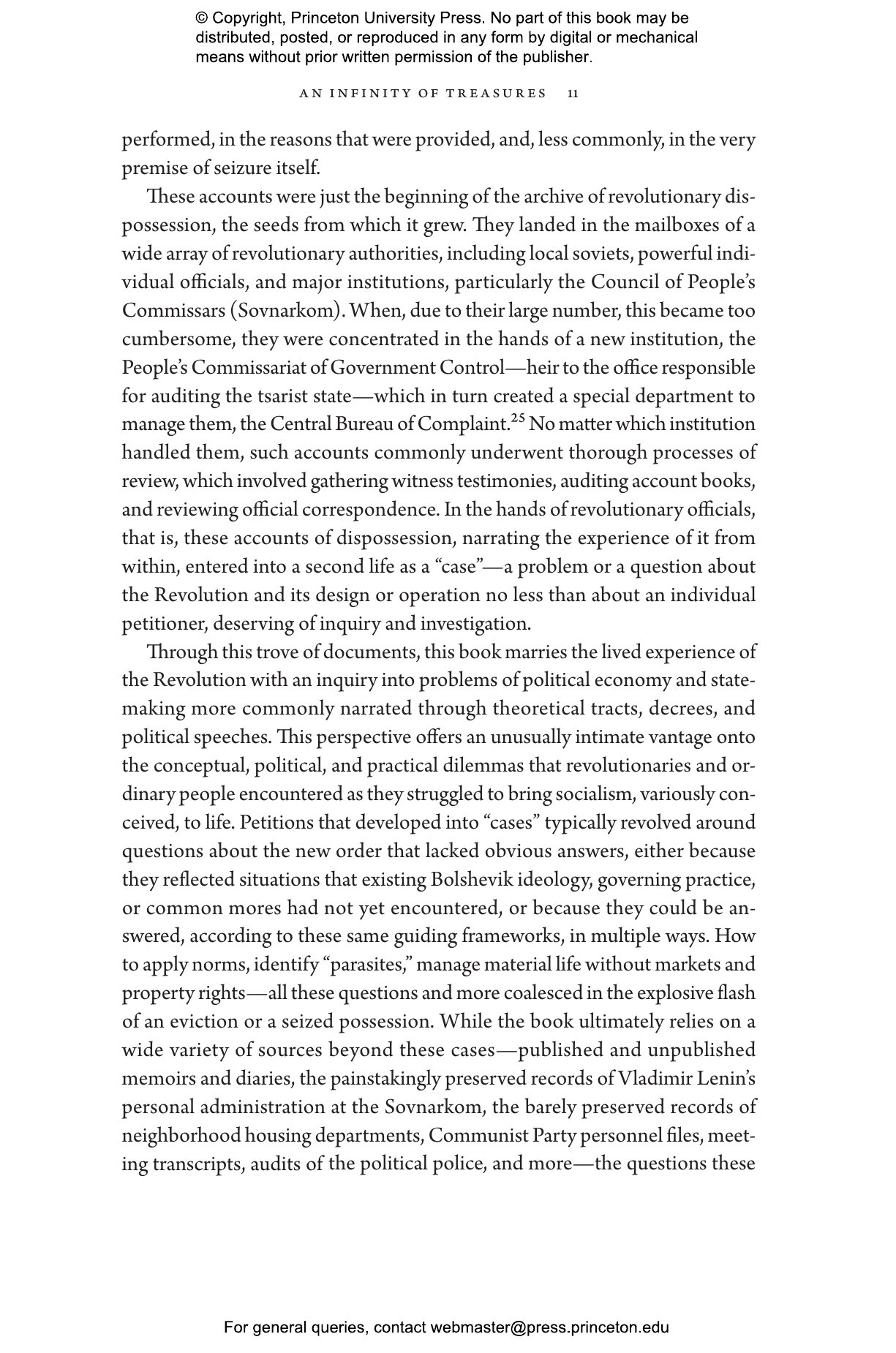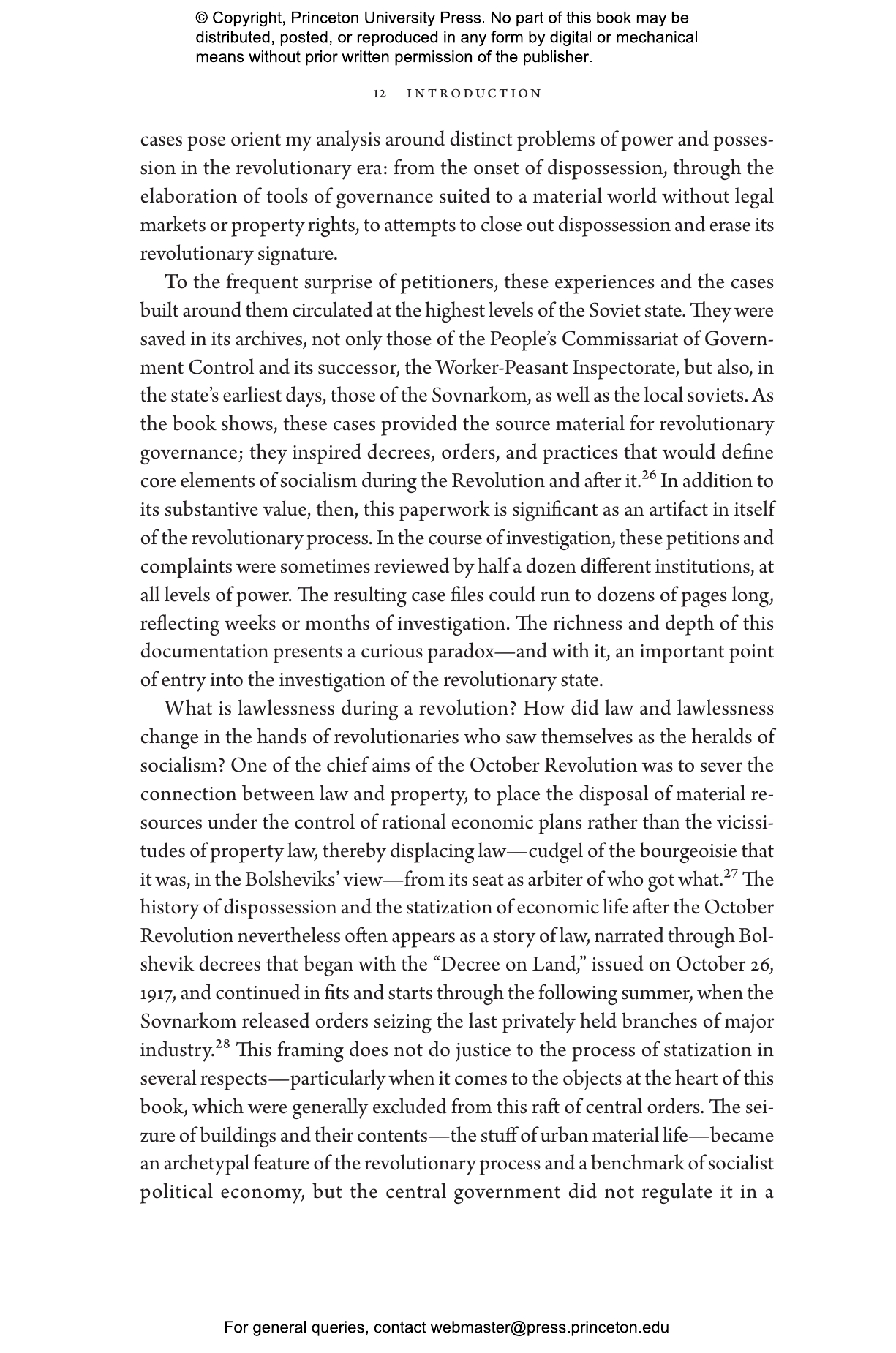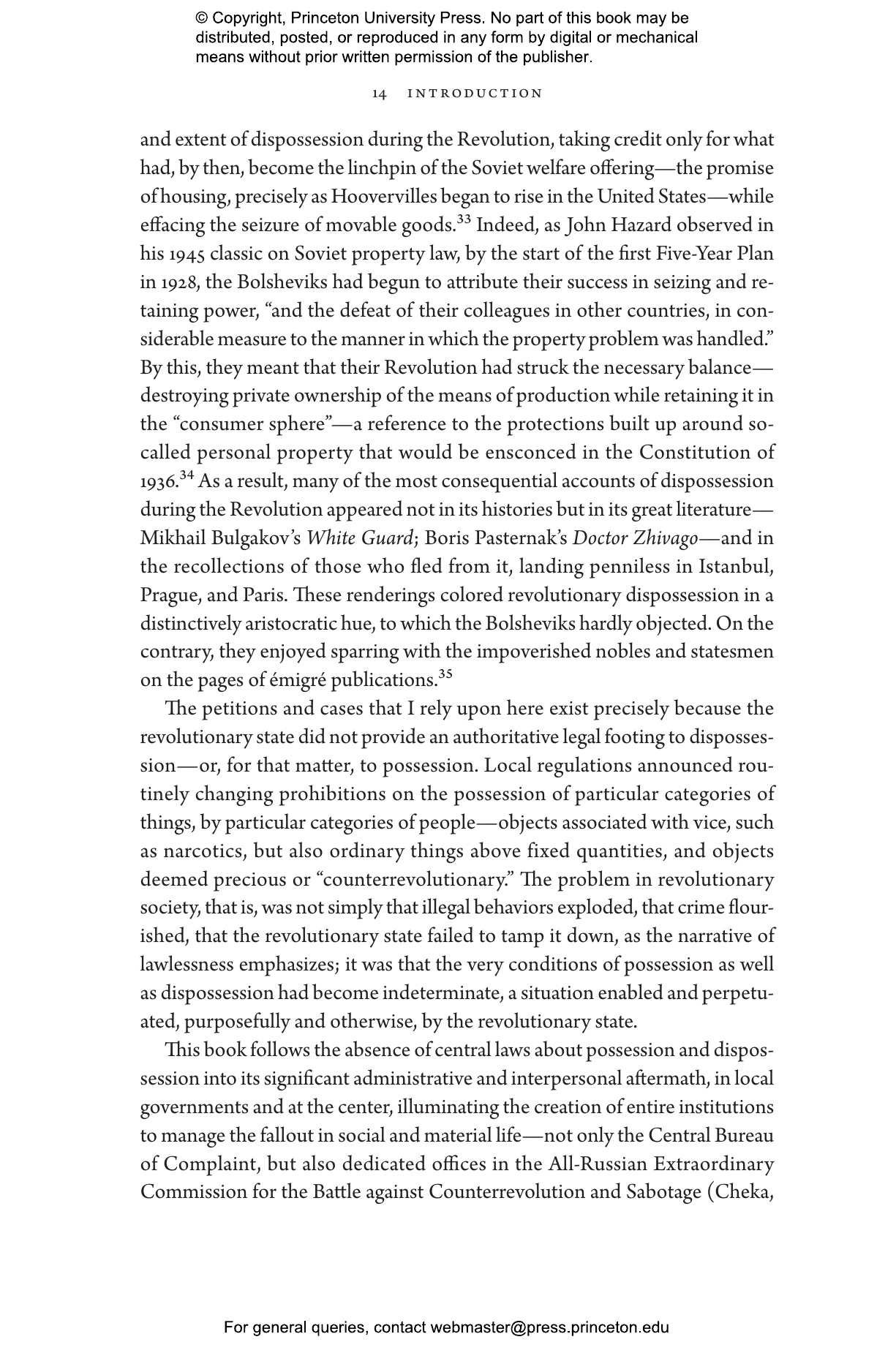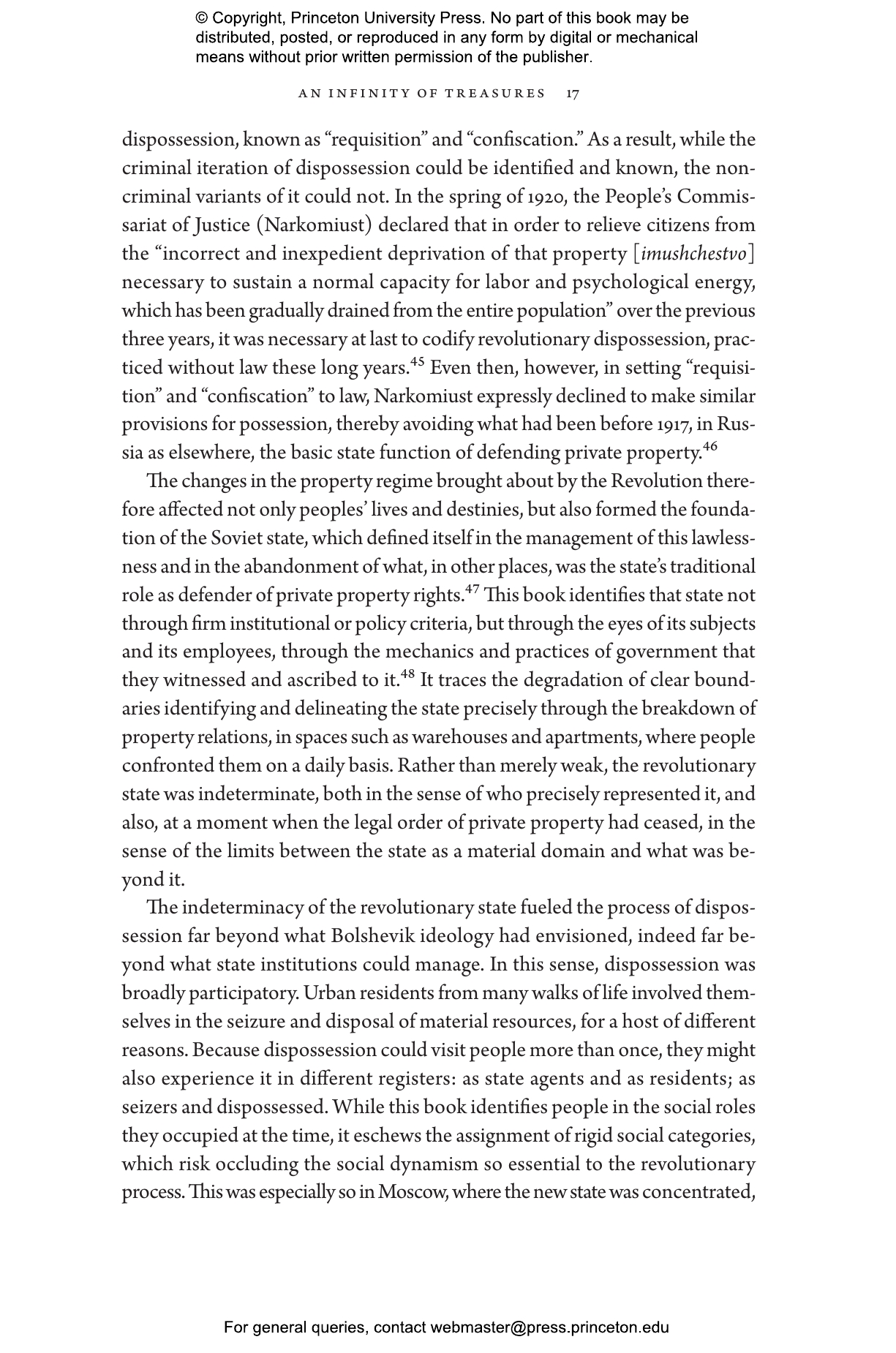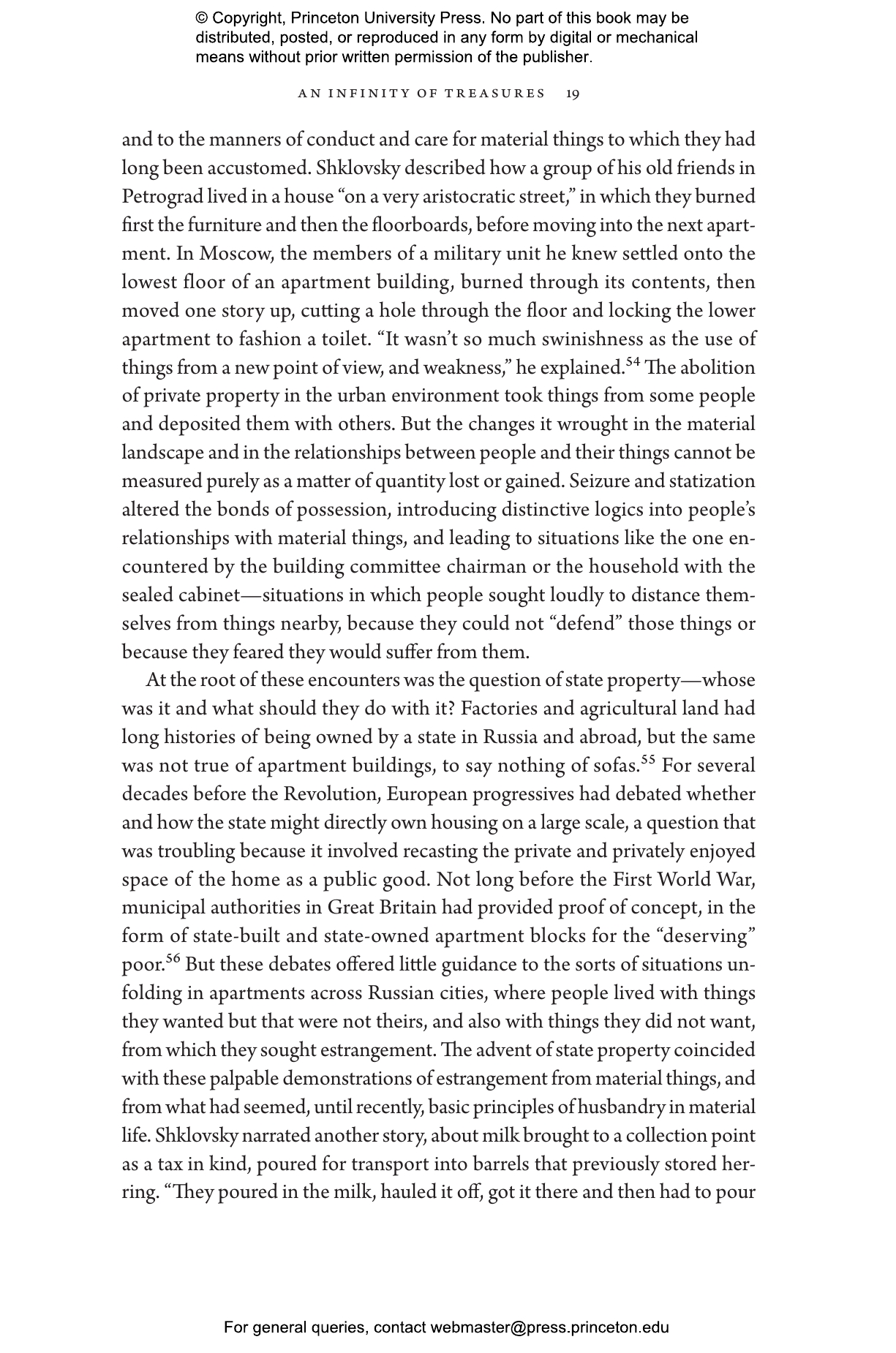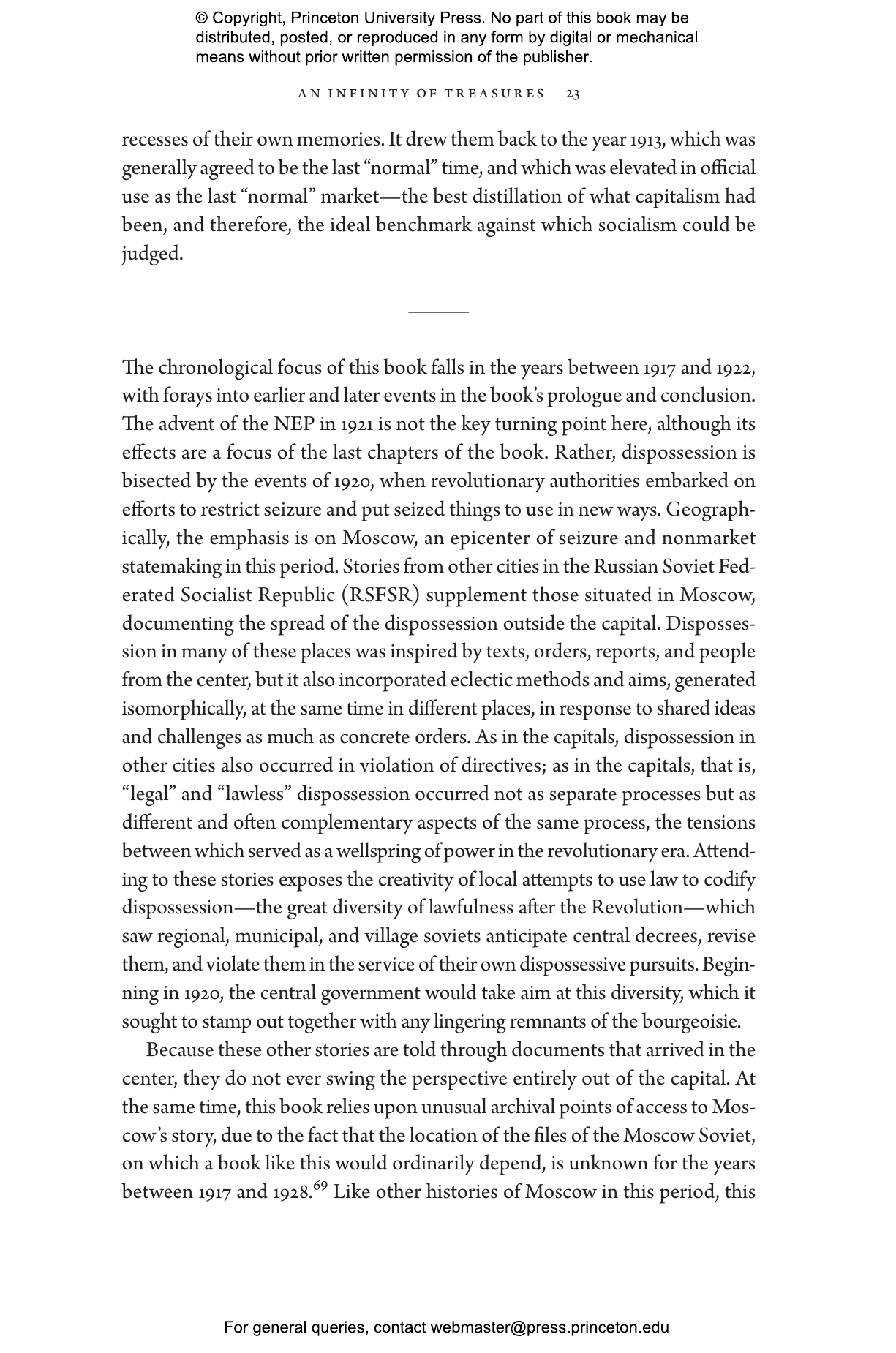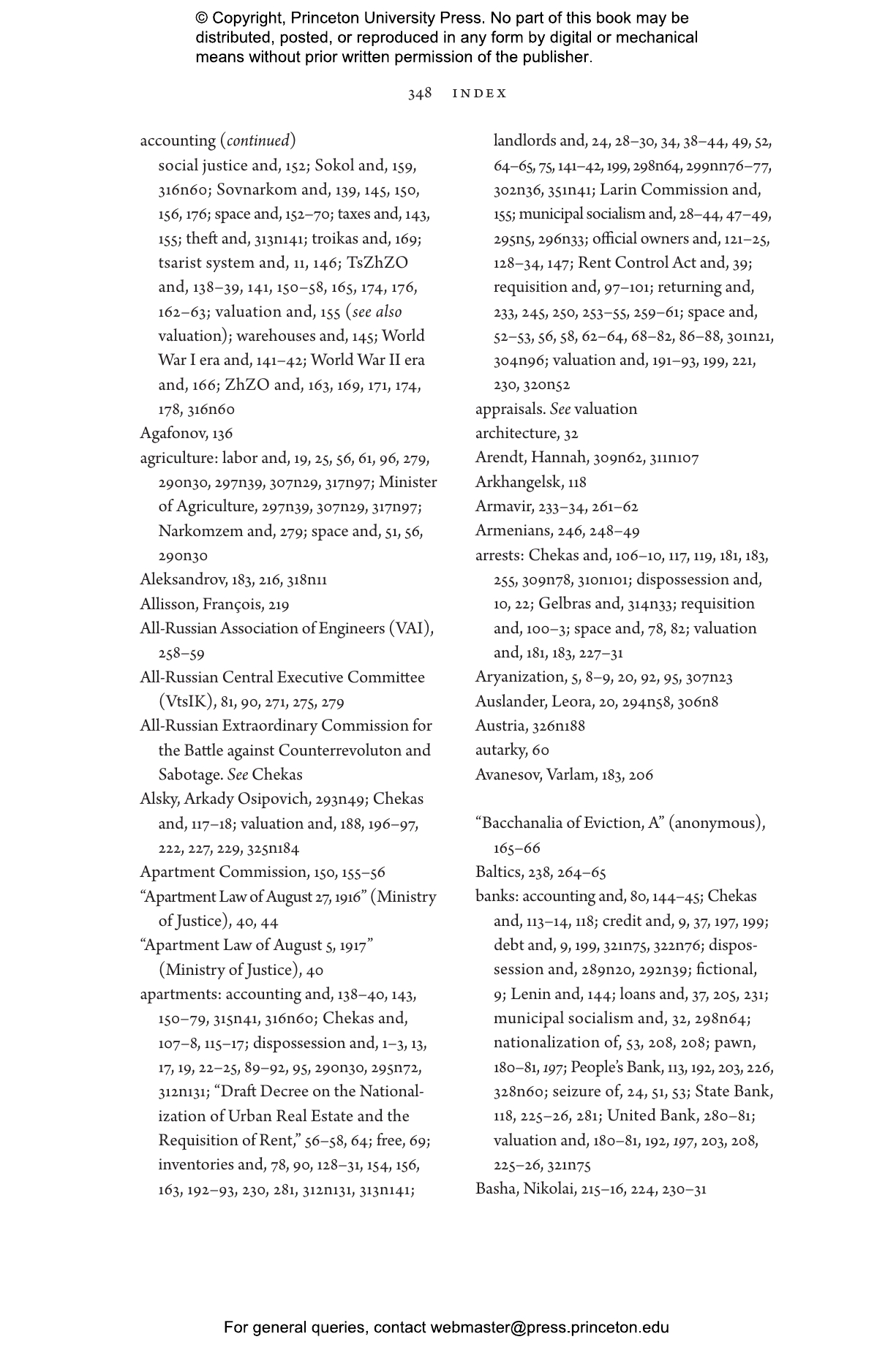The revolutions of 1917 swept away not only Russia’s governing authority but also the property order on which it stood. The upheaval sparked waves of dispossession that rapidly moved beyond the seizure of factories and farms from industrialists and landowners, envisioned by Bolshevik revolutionaries, to penetrate the bedrock of social life: the spaces where people lived. In Power and Possession in the Russian Revolution, Anne O’Donnell reimagines the Bolsheviks’ unprecedented effort to eradicate private property and to create a new political economy—socialism—to replace it.
O’Donnell’s account captures the story of property in reverse, showing how the bonds connecting people to their things were broken and how new ways of knowing things, valuing them, and possessing them coalesced amid the political ferment and economic disarray of the Revolution. O’Donnell reminds us that Russia’s postrevolutionary confiscation of property, like many other episodes of mass dispossession in the twentieth century, largely escaped traditional forms of record keeping. She repairs this omission, drawing on sources that chronicle the lived experience of upheaval—popular petitions, apartment inspections, internal audits of revolutionary institutions, and records of the political police—to reconstruct an archive of dispossession. The result is an unusually intimate history of the Bolsheviks’ attempts to conquer people and things.
The Bolsheviks’ reimagining of property not only changed peoples’ lives and destinies, it formed the foundation of a new type of state—one that eschewed the defense of private property rights in favor of an enduring but enigmatic new domain: socialist state property.
"[A] powerful and illuminating account of how people lost and laid claim to things – apartments, household items and other personal possessions – in revolutionary Moscow. . . . O’Donnell’s calm analysis of the phases of revolutionary dispossession makes compelling reading. The book also contains some surprises even for readers under no illusions about the chaos and coercion of early Bolshevik Russia."—Stephen Lovell, Times Literary Supplement
"One of the most thought-provoking and well-researched books on the Russian Revolution and is essential reading to understand the revolutionary experience."—Aaron B. Retish, The Russian Review
"Power and Possession offers a clear picture of how the Soviet state sought to know and document the urban material world. . . . [A] welcome addition to the literature on the 1917 Revolutions and the Bolsheviks’ struggles to transform Russia."—Peter Fraunholtz, H-Net Reviews
“This book is an exceptional contribution to our understanding of the Russian Revolution in cities, and of the very creation of the Soviet State. It deals with historiographic and theoretical issues, but also offers a very concrete narrative of what made the Russian Revolution singular and daily life in the revolution whirlwind a unique experience. It is brilliant, sophisticated, and clearly written.”—Juliette Cadiot, École des Hautes Études en Sciences Sociales (EHESS), Paris
“A revelation. This beautifully researched and original book demonstrates the centrality of revolutionary dispossession in the state-making formation of the Soviet Union. We are shown vividly how the fervent quest to abolish private property not only reframed major infrastructure but also upended the fabric of domestic lives.”—Dame Caroline Humphrey, Cambridge University emeritus
“In Eastern Europe, 1989 saw significant attempts to offer victims material compensation for the Holocaust and the early communist seizures of property, but there was no equivalent after 1991. And yet, as Anne O’Donnell brilliantly narrates, the fate of things—buildings, furniture, typewriters, clothes, sugar, and revolvers—all mattered a great deal in the early years of Soviet power. Those who seized property, and those who were dispossessed, frantically appealed to the state using the new revolutionary language. But this was a state only just coming into existence, one that was wrestling with questions of law and accounting, as well as its own urgent need for offices, storerooms, and housing. Working at the intersection of legal, economic, and social history, O’Donnell provides an exciting new perspective on the material life of the Russian Revolution.”—Miriam Dobson, University of Sheffield
“Amazing and strange mutual relations arose between people and material objects during the Revolution. The Bolsheviks resolutely fought against private property; they requisitioned, confiscated, nationalized, socialized, municipalized, concentrated. Houses and apartments were inhabited by new tenants; pieces of furniture and household utensils, jewelry, and art objects acquired new managers and users. How did people lose property? How was this property used, accounted for, valued, and controlled? How effective were new managers who had a wide variety of items at their disposal? What discussions, what conflicts did these processes give rise to? These important questions are answered in detail in the book by Anne O’Donnell.”—Boris Kolonitskii, European University at St. Petersburg, St. Petersburg Institute of History, Russian Academy of Sciences
“A dark and greatly understudied aspect of the Russian Revolution is the widespread confiscation of apartments, furniture, clothing, jewelry, mementos, and other effects not from aristocrats but from quite ordinary people. Anne O'Donnell’s deeply thoughtful and thought-provoking book is based on an extraordinary catalogue of their stories.”—Mark Harrison, University of Warwick
“Anne O’Donnell’s book asks a fascinating and important question: How do revolutionaries establish the value of things in a state where one of their main aims is to dismantle the capitalist world with all its structures and notions of private property, the usual mechanisms for determining the value of things? With this richly textured study of the violent expropriation of urban property in the new Soviet state, O’Donnell launches a deeply researched, nuanced, and penetrating analysis of this massive confiscation at all levels, both in theory and practice. This landmark work demonstrates that the violent expropriation of property was not conceived as a temporary, peripheral, or accidental offshoot of a wartime emergency, but rather an essential plank of Bolshevik ideology and the Soviet project.”—James W. Heinzen, Rowan University





